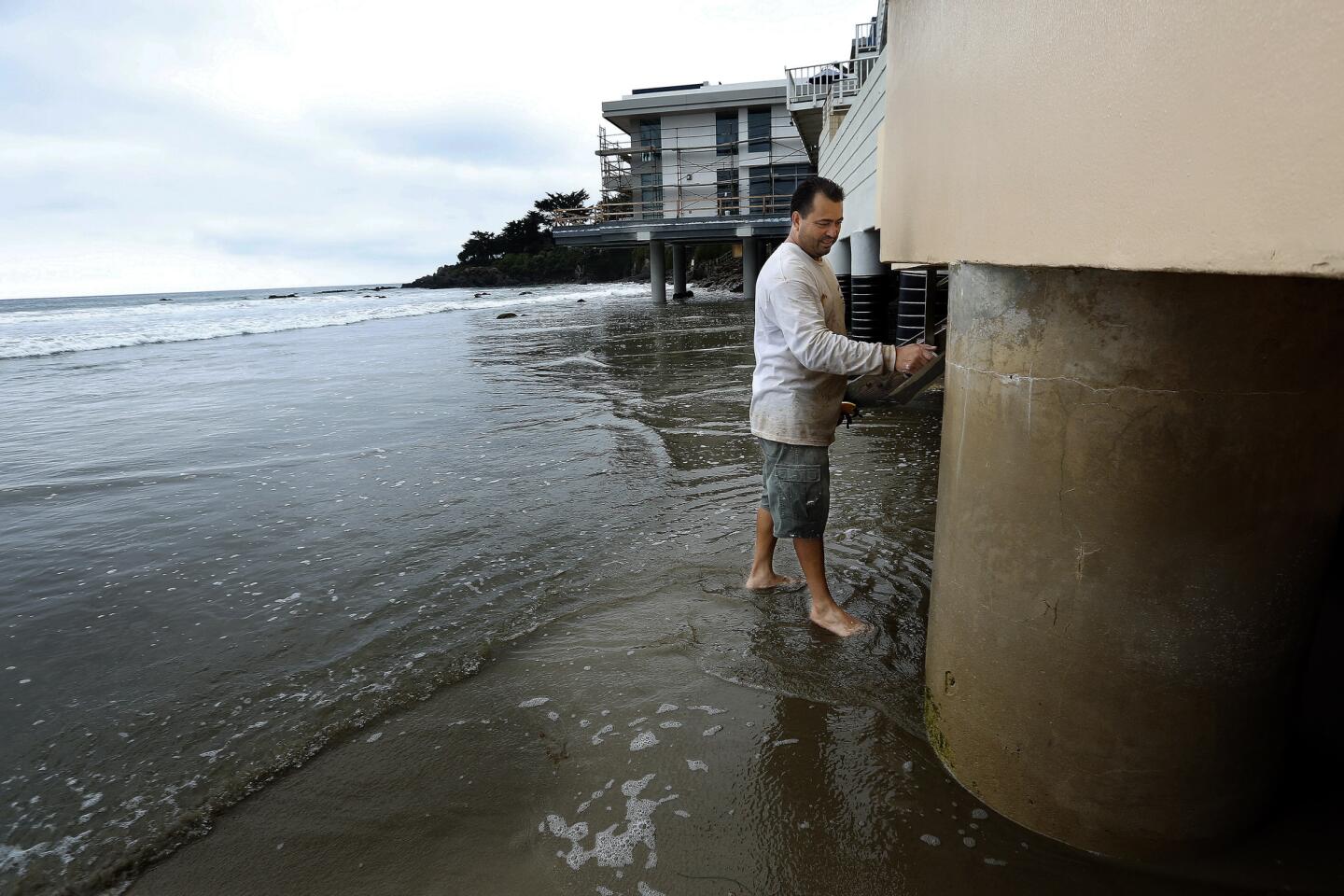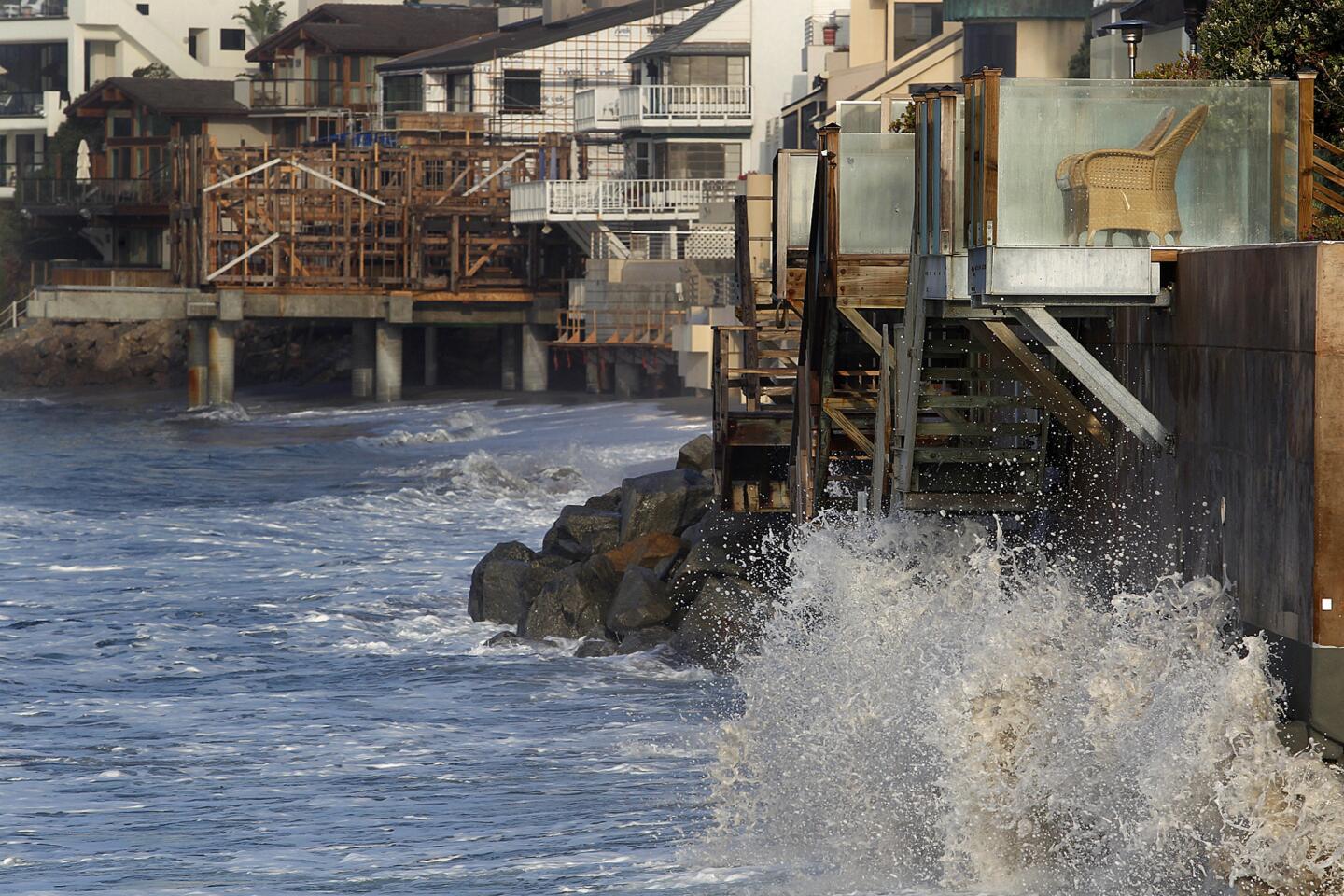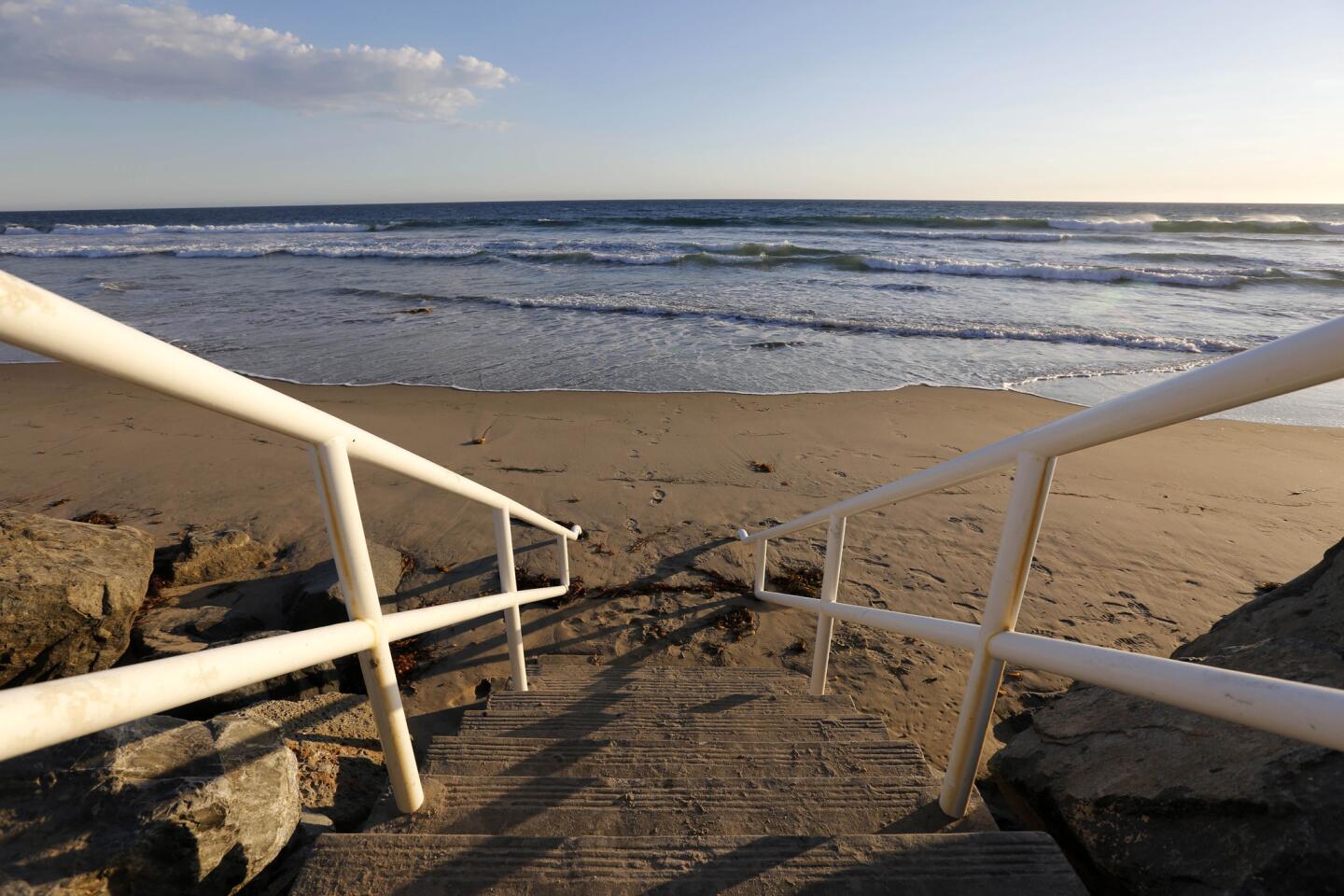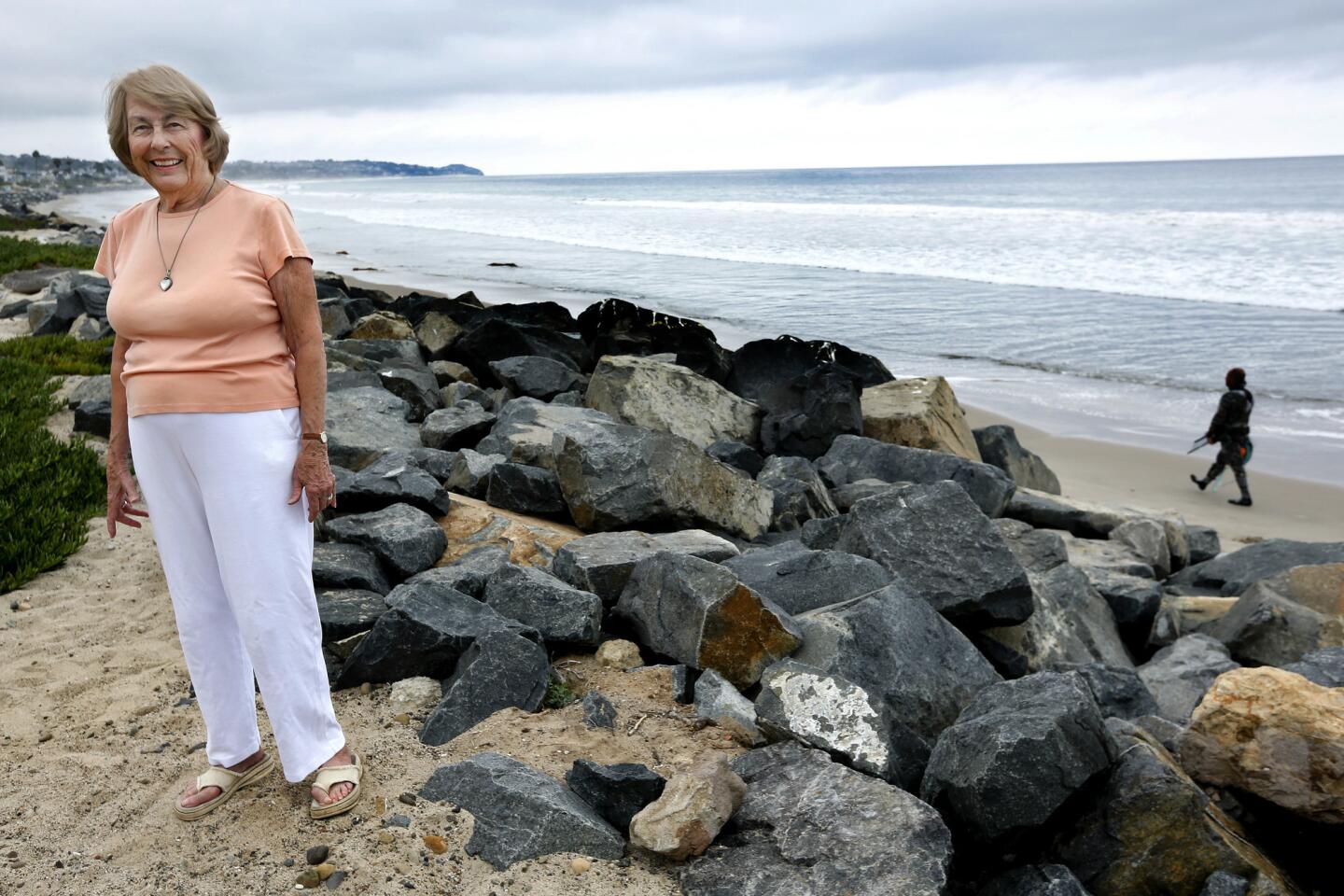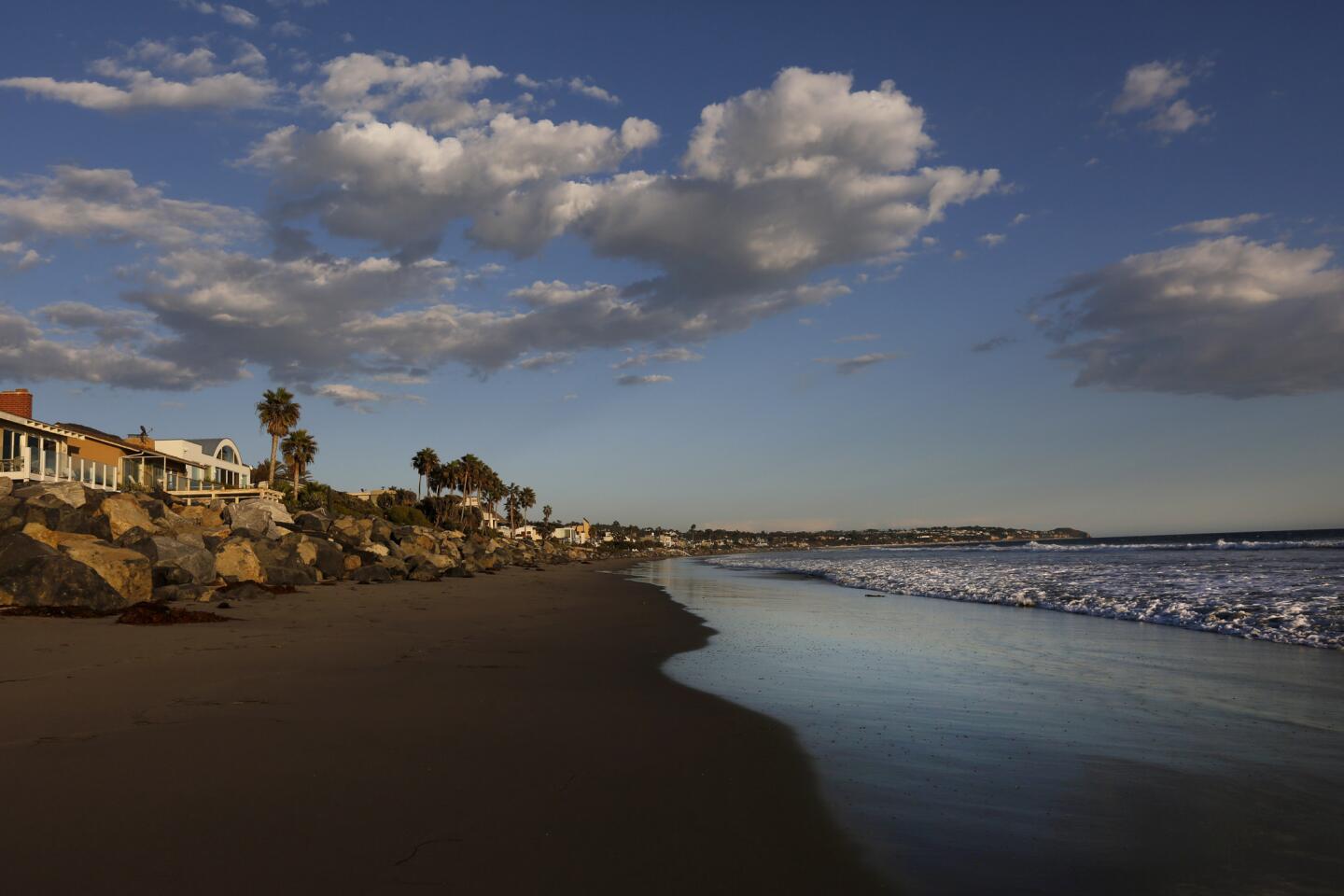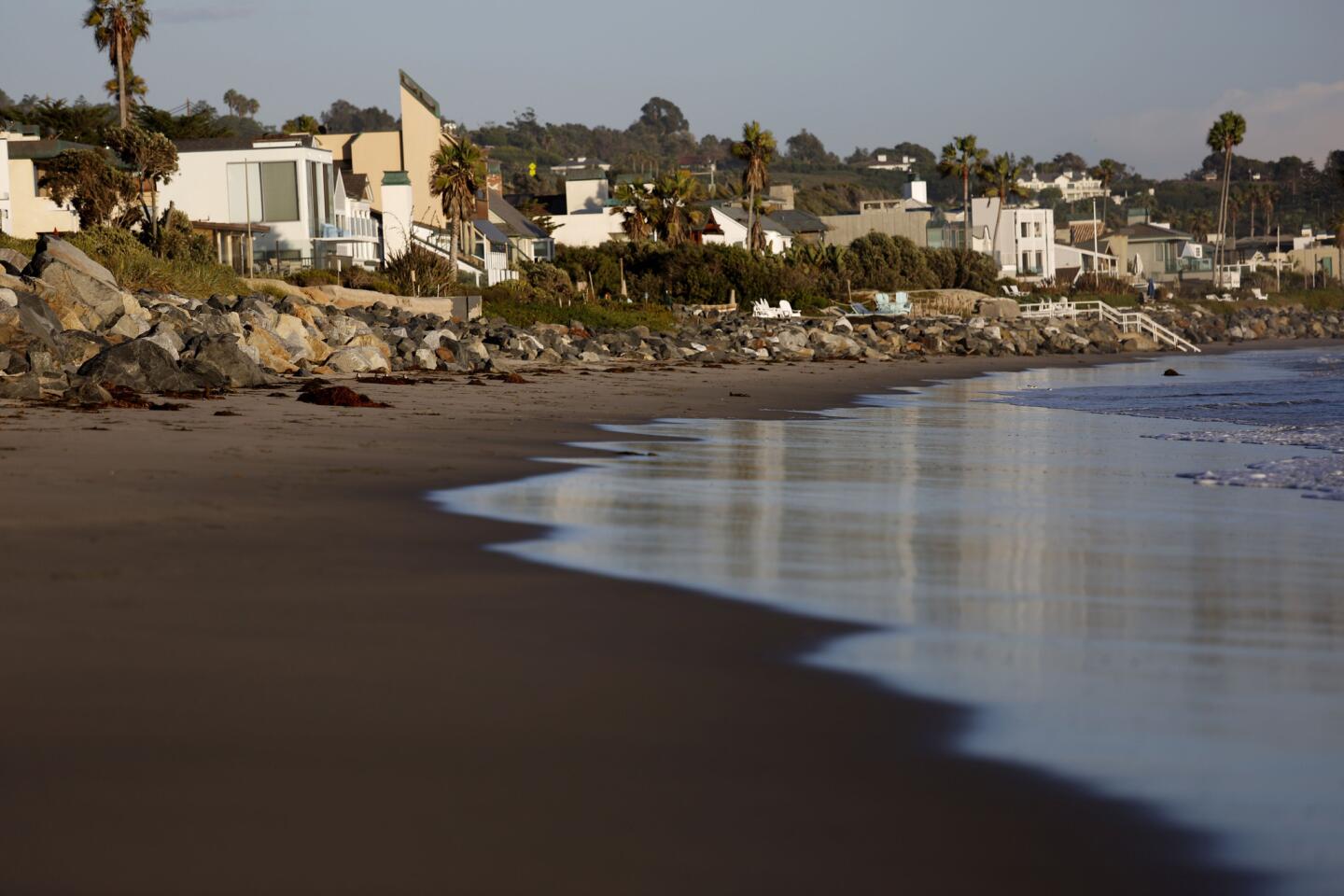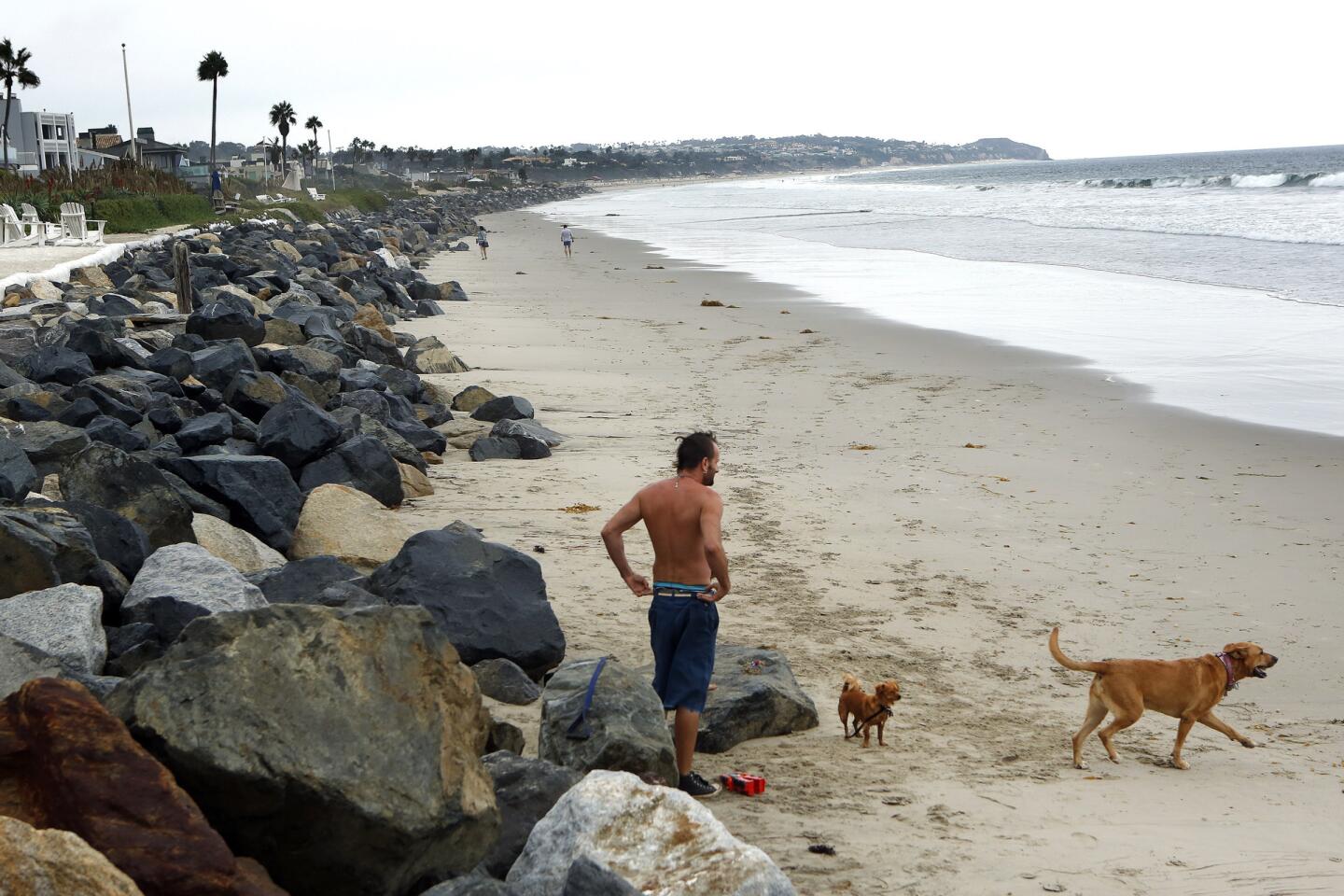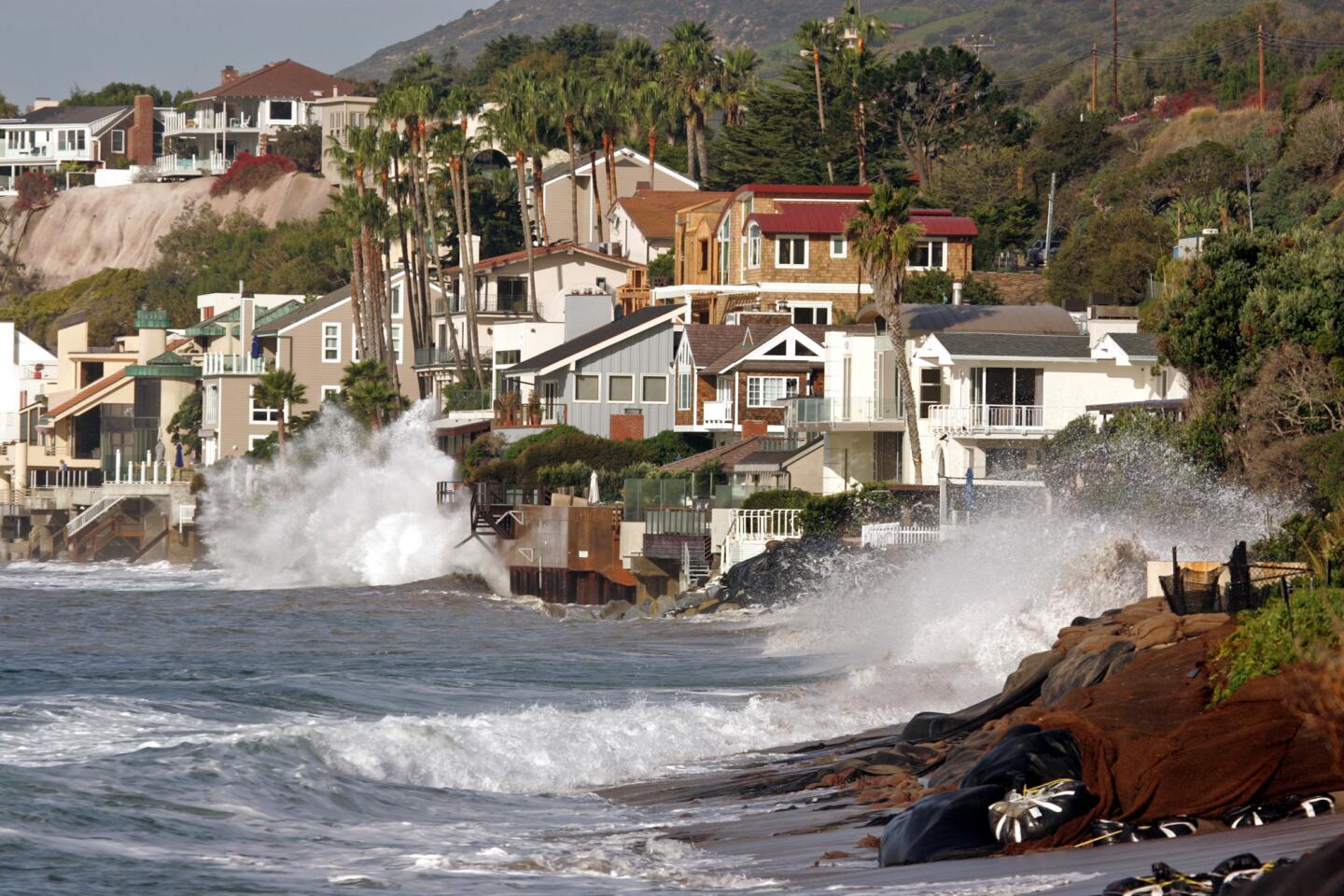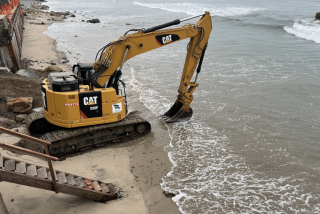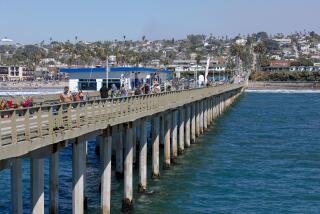Dustin Hoffman, Ray Romano and Pierce Brosnan all hope to restore this prized but battered Malibu beach
- Share via
Malibu’s Broad Beach, long a magnet for Hollywood A-listers and corporate chieftains, could once again live up to its name after decades of deterioration caused by pounding storms and high tides.
This month the California Coastal Commission narrowly approved an unprecedented sand-replenishment project along the prized but diminished 1.1-mile oceanfront.
Owners of 121 parcels have committed to paying $31 million over the next decade to fund the undertaking, which will involve trucking in mountains of sand from quarries in Simi Valley and Moorpark and trying to re-create sandy beach and dunes, the latter atop a massive, man-made rock barrier.
Residents who for decades have watched rough surf encroach on their coastal turf say they’re pleased that restoration work might soon begin — after the coming El Niño winter, that is.
“As I understand it, what the homeowners are doing on Broad Beach is unique: We are funding the restoration totally at our own expense,” said Michael Sitrick, a crisis-PR man who has had a getaway home on Broad Beach since 1999.
The plan, approved by a 7-5 vote Oct. 9, has met with skepticism from coastal advocates, who remain unconvinced that the pricey venture will work and who fear that the public could pay a high cost in reduced beach access if it fails.
“The question of whether the project will be successful is fraught with uncertainty,” said Sarah Sikich, vice president of Heal the Bay, a nonprofit group. “We’ve never seen a dune restoration in California where the foundation is a rock sea wall.”
Jack Ainsworth, the coastal commission’s senior deputy director, described the plan as a “pilot project” that will be subject to the vagaries of climate change.
“You can have the best modeling in the world but not know the effect of all the variables,” Ainsworth said. “Certainly, this gets more difficult as time goes on and the sea level rises and we have more vigorous storms.”
Although the homeowners asked the panel to approve a 20-year plan, commissioners opted to hold the line at 10. “If at the end of 10 years everything’s working great,” Ainsworth said, “the commission can extend the permit.”
Among those who will be contributing to the $3.1-million annual fund for the next decade are “Modern Family” co-creator Steve Levitan, billionaire businessman Patrick Soon-Shiong and actors Dustin Hoffman, Ray Romano and Pierce Brosnan. (Filmmaker Steven Spielberg last summer sold his Broad Beach compound, with 144 feet of ocean frontage, for $26 million.)
Having started the permitting process five years ago, “we’re very pleased that we’re one step closer,” said Kenneth Ehrlich, an attorney for the Broad Beach Geologic Hazard Assessment District.
The district, which the property owners formed to finance, build and manage the project, spans all of Broad Beach and a portion of Victoria Point, from Trancas Creek on the east end to Lechuza Point on the west.
As approved, the plan will allow the district to import 300,000 cubic yards of sand every five years from ancient marine deposits that now lie 40 miles inland. “That’s major nourishment,” Ehrlich said. Each year in between, they will be able to bring in an additional 75,000 cubic yards, if needed.
The aim, Ehrlich said, is to restore 50 to 60 feet of landscaped dunes and 65 to 75 feet of beach, to match roughly what existed in the early 1970s. Twenty-two parcels at the west end will not receive direct sand replenishment because the commission staff feared ill effects on sensitive habitats.
Ehrlich said the district was working with commission staff to finalize the coastal development permit.
As part of their agreement with the coastal panel, residents will also study the feasibility of moving off septic systems and connecting to a new or existing wastewater treatment facility. The property owners will have three years to complete their study, with the aim of being off septic systems within six years, Ehrlich said.
Hollywood has long gravitated to Broad Beach. In the 1960s, Katharine Hepburn and Spencer Tracy rented a house on the strand; he suffered a heart attack there in 1963. Ali McGraw and Steve McQueen shared a multilevel house in the 1970s; one day they set their dog on a photographer who asked them to pose.
The beach has long been a battleground that has pitted property owners against beachgoers (over access to the sand) and against regulators (over the sometimes illegal measures residents have taken to keep the public and Mother Nature at bay).
Starting in the 1970s, winter storms began to deplete the shoreline, with episodic El Niño events scouring away prodigious amounts of sand.
Over time, property owners erected “private property” signs and hired security guards on all-terrain vehicles to chase visitors off the sand. In 2005, homeowners illegally bulldozed wet sand from state-owned tidelands to erect a massive ridge between them and the ocean. Residents contended at the time that they wanted to restore sandy dunes that had eroded in winter storms.
The Coastal Commission ordered a stop to both the vigilante patrols and the bulldozing and filed suit against the homeowners for moving public beach. The panel issued emergency permits for temporary protections including giant sandbags, many of which still litter the beach.
A 2010 storm accelerated the erosion and damaged houses, prompting fretful homeowners to spend $4 million creating, under yet another emergency permit, an ankle-twisting, 36,000-ton rock sea wall — known as a revetment — in front of their homes along most of the beach. In approving the beach-replenishment plan this month, the coastal panel also agreed to allow the revetment to remain.
Property owners originally pegged the price to restore their beach and dunes at about $20 million, but “that cost has grown substantially because of conditions imposed” by coastal commissioners, said Marshall Grossman, an entertainment attorney who often welcomes clients to his Broad Beach pad.
A stroll at low tide along Broad Beach calls to mind that iconic scene from “Planet of the Apes” when Charlton Heston, as astronaut George Taylor, comes across the broken-down Statue of Liberty stuck in the sand.
The bottoms of stair rails and stairways are embedded in sand, whereas, at high tide, roiling waves churn over the tops of metal and wooden stairways, many now corroded or rotted away from over-exposure to sand and seawater.
What will happen to the public’s ability to get to the beach is of great concern to Stefanie Sekich-Quinn, coastal preservation manager for the Surfrider Foundation. She and other coastal advocates argued, to no avail, that homeowners should agree to easements to allow the public pathways to the sand.
As a result, she said, future access could be iffy. Given that the plan calls for building dunes atop a sea wall — an unnatural method that could exacerbate erosion — Sekich-Quinn expects the seaward sand “will get walloped by the ocean.”
Wini Lumsden, a longtime resident who applauds the project, nonetheless agreed that erosive forces could prevail. “Nature,” she said, “is going to keep trying to take it away.”
Twitter: @MarthaGroves
ALSO
Fair offers students of color a better shot at prep school dreams
Mayor’s return to church where protesters disrupted him is scuttled
In face of criticism, S.F. supervisor reaffirms city’s sanctuary policies
More to Read
Sign up for Essential California
The most important California stories and recommendations in your inbox every morning.
You may occasionally receive promotional content from the Los Angeles Times.

